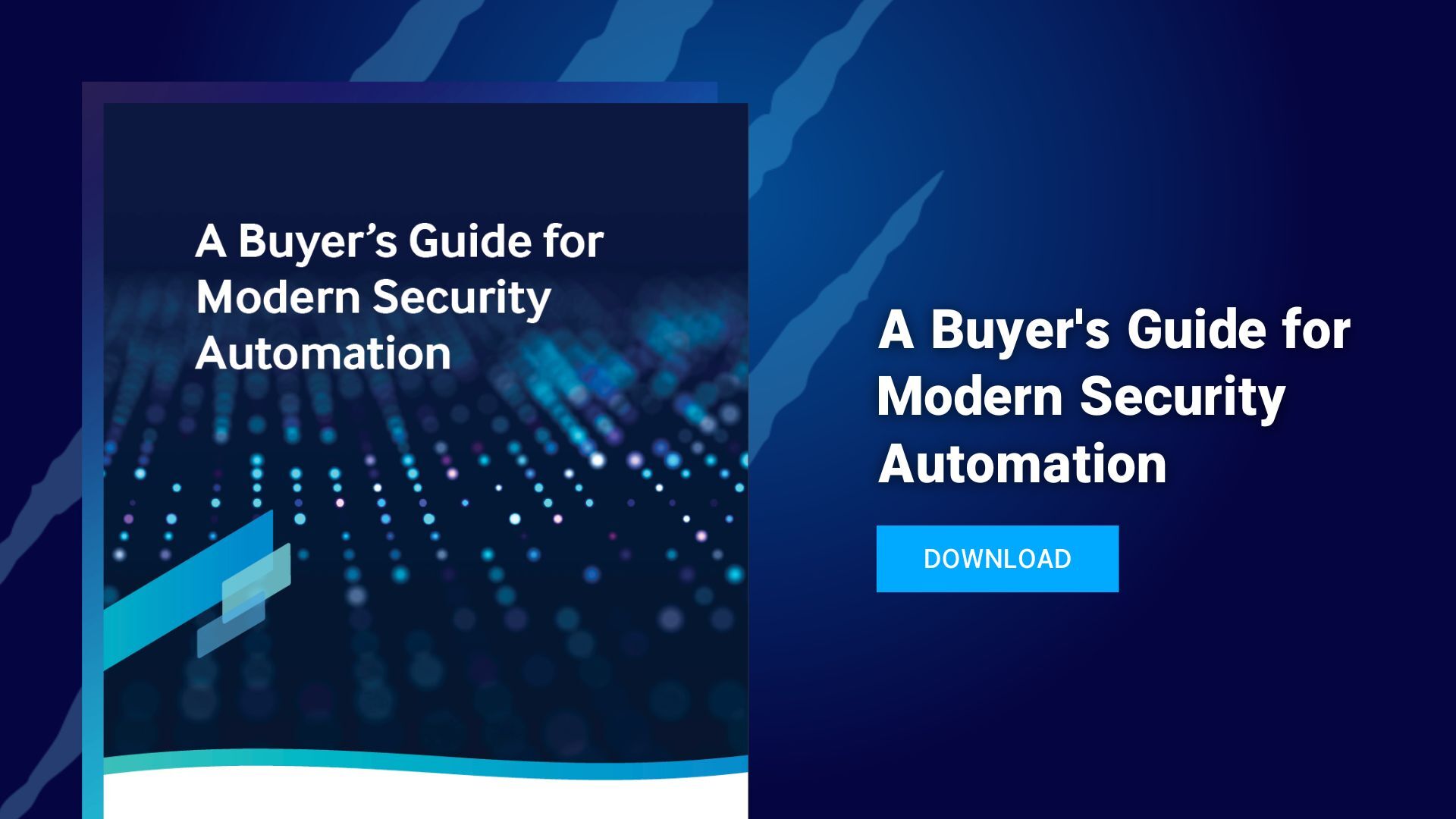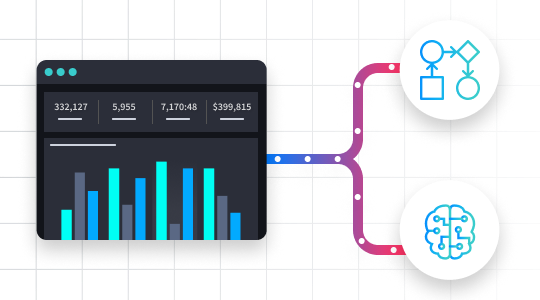Cyber threats are relentless, always adapting, and constantly probing your defenses. For businesses, protecting critical assets, sensitive data, and hard-earned customer trust isn’t just a best practice; it’s a battle for survival. Relying solely on manual security processes in the face of ever-increasing threats is like fighting a modern war with outdated tactics. You’re simply outmatched.
The solution isn’t to work harder but to work smarter. Enter security automation, a powerful shift that promises to transform your defense strategy, delivering unmatched efficiency, precision, and proactive threat mitigation.
What is Security Automation?
At its core, security automation refers to the use of technology to perform security tasks without human intervention. Think of it as empowering your cybersecurity team with intelligent, tireless assistants that can handle routine, repetitive, and time-sensitive operations at lightning speed. This encompasses a broad spectrum of activities, from automatically detecting and responding to threats and orchestrating complex security workflows, to managing configurations and ensuring compliance. Instead of analysts manually sifting through alerts or performing repetitive checks, automated systems can triage incidents, block suspicious activity, and even patch vulnerabilities instantaneously, freeing up human expertise for more strategic tasks.
Why Automate Cybersecurity Processes?
The question isn’t whether your business can afford security automation, but whether it can afford not to have it. In an era where a single breach can cost millions and shatter consumer trust, relying on human-powered processes for every alert and incident is simply unsustainable. Your security team, no matter how skilled, is limited by bandwidth, susceptible to fatigue, and can’t possibly keep pace with the sheer volume and velocity of modern threats.
Consider the overwhelming challenges SOC teams face daily:
- The Alert Avalanche: Security tools generate thousands, even millions, of alerts. Manually triaging each one is an impossible task, resulting in critical threats being overlooked in the noise.
- The Talent Gap: A severe shortage of skilled cybersecurity professionals exists, making it highly challenging and costly to staff a fully manual security operations center (SOC).
- The Speed of Attacks: Cyberattacks often unfold in minutes or even seconds. A human response simply can’t react fast enough to contain zero-day exploits or rapid-fire phishing campaigns.
- Human Error: Even the most diligent analyst can make mistakes, overlook a detail, or misconfigure a setting, creating vulnerabilities that attackers are quick to exploit.
This is where automation becomes not just an advantage, but a necessity. By offloading repetitive, high-volume, and time-sensitive tasks to intelligent systems, your organization gains:
- Unprecedented Speed and Scale: Automated playbooks can detect, investigate, and respond to threats in real time, often before human intervention is even possible. This dramatically shrinks the window of opportunity for attackers.
- Enhanced Accuracy and Consistency: Machines don’t get tired or distracted. They follow predefined rules and workflows with perfect consistency, virtually eliminating human error in routine tasks.
- Optimized Resource Allocation: Free your highly skilled security analysts from the monotony of alert triage, log analysis, and patch management. Instead, empower them to focus on strategic threat hunting, complex incident response, and developing proactive security measures.
- Reduced Operational Costs: While there’s an initial investment, the long-term savings from preventing breaches, reducing manual labor, and improving efficiency far outweigh the upfront costs.
- A Proactive Security Posture: Automation enables continuous monitoring, vulnerability scanning, and policy enforcement, allowing your business to move from a reactive “clean-up” model to a proactive “prevent-and-predict” strategy.
Embracing cybersecurity automation isn’t just about adopting new technology; it’s about fundamentally reshaping your security strategy to be more resilient, efficient, and capable of defending against today’s and tomorrow’s threats.
Cybersecurity Automation Tools
So, if automation is the answer, what does it actually look like in practice? The cybersecurity landscape is rich with innovative solutions designed to bring this efficiency to life. These aren’t just single-purpose applications; they often represent powerful platforms that integrate with your existing security infrastructure, orchestrating workflows and executing tasks autonomously.
This orchestration involves various specialized tools, each playing a crucial role in creating a cohesive, automated defense system. You are probably familiar with Security Orchestration, Automation, and Response (SOAR) platforms, a legacy SOC automation tool that collects data from disparate security tools, enriches alerts, and executes automated playbooks for incident response. Many traditional SOAR tools have been acquired and bundled in with Security Information and Event Management (SIEM) systems, which aggregate and analyze log data from across your entire IT environment, often leveraging machine learning to identify anomalous behavior.
Beyond the SIEM vs. SOAR debate, you’ll also find micro-automation layered on top of nearly every tool in your tech stack. The true power of security automation lies not in any single platform to rule them all but in the technologies’ synergistic integration, allowing your security posture to evolve from a series of disconnected reactions to a unified, intelligent, and preemptive defense. That’s why investing in an independent security automation tool is pivotal for success.
Security Automation Use Cases
Understanding the diverse array of tools available is one thing, but truly grasping the power of security automation comes from seeing it in action. These capabilities aren’t theoretical; they’re being actively deployed across industries to address critical cybersecurity challenges. By examining common security automation use cases, we can illustrate precisely how businesses are leveraging these technologies to bolster their defenses, streamline operations, and ultimately, safeguard their digital future.
Threat Hunting
Security automation plays a pivotal role in transforming threat hunting from a manual, time-consuming endeavor into a more efficient and proactive process. Instead of analysts sifting through mountains of logs and alerts for hours, automation can take on the laborious task of collecting and normalizing data from disparate sources, applying initial filters, and automatically correlating indicators of compromise (IOCs) against known threats. This not only significantly reduces the noise but also rapidly highlights suspicious patterns or deviations from baseline behavior. By automating these foundational steps, security teams can free up their highly skilled threat hunters to focus on sophisticated analysis, formulating complex queries, and deep-diving into truly anomalous activity, effectively turning them into strategic investigators rather than data processors.
Incident Response
Security automation dramatically accelerates incident response by orchestrating and executing predefined playbooks. When a security event is detected, automated systems can instantly isolate compromised endpoints, block malicious IP addresses, revoke user credentials, or initiate forensic data collection. This immediate, machine-speed reaction significantly reduces dwell time, minimizes the blast radius of an attack, and frees human responders to focus on complex decision-making, strategic containment, and root cause analysis, ultimately reducing the financial and reputational damage of a breach.
SIEM Triage
For Security Information and Event Management (SIEM) alert triage, automation is crucial for cutting through the overwhelming volume of alerts. Instead of security analysts manually sifting through thousands of daily notifications, automation can automatically filter out known false positives, enrich legitimate alerts with contextual data (like user information, asset criticality, or threat intelligence), and prioritize incidents based on their severity and potential impact. This intelligent triage ensures that human attention is immediately directed toward the most critical and actionable threats, preventing alert fatigue and improving overall operational efficiency.
Phishing
Security automation plays a vital role in combating the pervasive threat of phishing attacks. Automated solutions can analyze incoming emails for suspicious indicators such as malicious links, unusual sender addresses, or spoofed domains, often before they even reach an employee’s inbox. If a suspicious email is identified, automation can automatically quarantine it, notify the recipient of a potential threat, block the sender across the network, and initiate a broader scan for similar campaigns, significantly reducing the success rate of phishing attempts and protecting users from engaging with malicious content.
EDR Alert Triage
Endpoint Detection and Response (EDR) solutions generate highly detailed alerts, and security automation is essential for making sense of this data at scale. Automation can streamline what is otherwise a manual EDR alert triage process by automating alert correlation and initial investigations. This involves correlating alerts with other security events, checking against known threat intelligence, and automatically escalating or dismissing alerts based on predefined rules. This process streamlines the investigation workflow, reduces the burden on security analysts by eliminating benign alerts, and ensures that legitimate threats are rapidly identified, prioritized, and handed off for human intervention or further automated response.
Security Automation Examples
Beyond theoretical benefits, real-world examples from Swimlane customers powerfully illustrate the impact of security automation. For instance, RV Connex, an MDR service provider, achieved a remarkable 300% increase in their customer-to-analyst ratio, enabling them to onboard more clients without increasing headcount, while simultaneously automating vulnerability management and fraud case handling.
Similarly, and MSSP customer leveraged automation to drastically reduce alert fatigue, effectively gaining the equivalent of 20 virtual SOC analysts, saving over two hours per threat detection and response, and closing over 5,000 cases in a remarkably short period. These outcomes demonstrate how the Swimlane Turbine AI automation platform empowers organizations to not only optimize existing security processes but also expand their capabilities and achieve significant ROI by transforming manual chaos into automated mastery
Benefits of Security Automation
In essence, security automation delivers a multifaceted advantage for any organization. It dramatically boosts the speed and efficiency of threat detection and response, far surpassing the capabilities of manual methods. Eliminating repetitive tasks significantly enhances accuracy and consistency, drastically reducing human error and preventing analyst fatigue.
This optimization frees up highly skilled security professionals to concentrate on complex, strategic initiatives, rather than routine triage. Ultimately, security automation yields a more robust and proactive security posture, alongside substantial cost savings and the necessary scalability to combat the continuously evolving landscape of cyber threats, thereby ensuring lasting organizational resilience.
How Swimlane Powers Advanced Security Automation
Swimlane Turbine AI Automation platform stands at the forefront of this transformation, offering flexible and scalable solutions to empower every security function. Far more than just automating simple tasks, Turbine provides the intelligence and flexibility to orchestrate complex workflows, adapt to new threats, and integrate seamlessly across your entire security stack. It enables organizations to move beyond reactive defense, leveraging AI and machine learning to make security operations smarter, faster, and more scalable. To learn how your organization can benefit from security automation, visit swimlane.com/demo
Security Automation FAQs
What does automation in a security platform provide?
Security automation platforms adapt to an organization’s unique security requirements, automating tasks that take up valuable time and attention. With the help of automation incident response processes can be accelerated, allowing SOC teams to respond to more incidents in less time without adding overhead.
Do SecOps teams really need security automation?
Without a doubt! Security Automation is an imperative for any organization. By automating security processes organizations proactively strengthen their security posture, detect and respond to threats with unparalleled speed, and stay ahead of the dynamic challenges posed by the ever-evolving cyber landscape. Ai-enabled security automation is not just a nice to have, it’s a necessity.
What types of security tasks can be automated?
Security automation can be applied to a broad range of tasks, including threat detection and response, phishing analysis, alert triage, vulnerability management, compliance reporting, user onboarding/offboarding, and even routine patch management.
Is security automation only for large enterprises?
No. While security automation is often associated with large organizations, businesses of all sizes benefit—especially those with limited resources. Swimlane Turbine is designed to be approachable for teams of any size, letting smaller organizations scale their defenses without hiring a massive SOC team.
How does security automation help with compliance?
Automation ensures that policies are enforced consistently, audit logs are maintained automatically, and reports can be generated on demand. This makes passing audits and demonstrating ongoing compliance much easier.
How does AI fit into security automation?
Swimlane Turbine leverages AI and machine learning to enhance threat detection, automate repetitive tasks, and deliver smart recommendations. AI helps with data enrichment, pattern recognition, and even predictive threat intelligence—making your automation workflows smarter and more proactive.

A Buyer’s Guide for Modern Security Automation
Cut through the complexity and frustration of SOAR and security automation solutions. This guide analyzes the wide range of security automation platforms available today, so you can find the best solution for your team.


